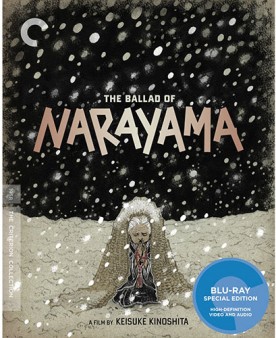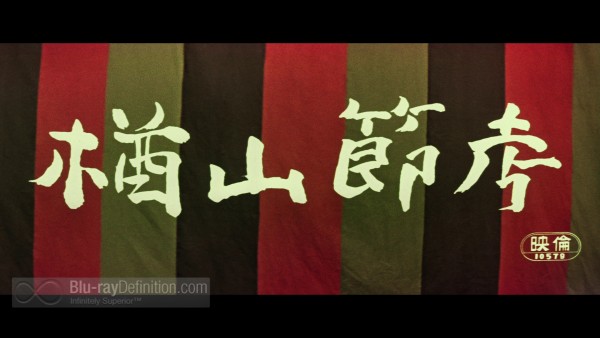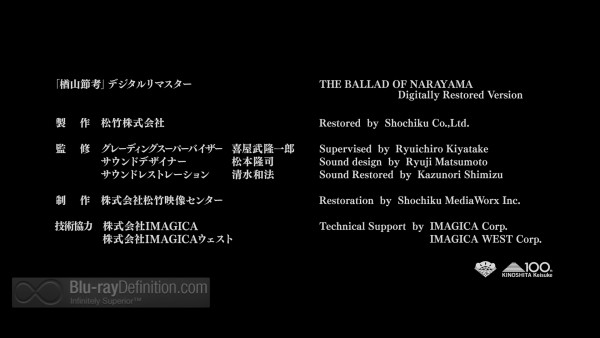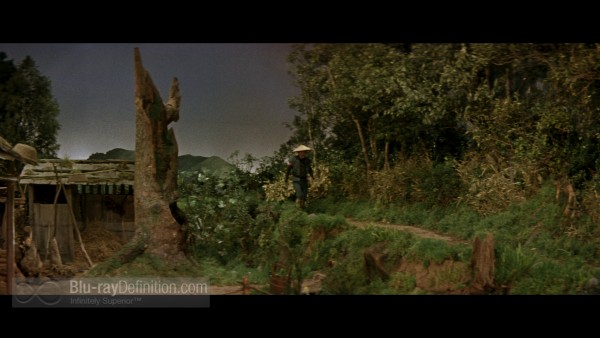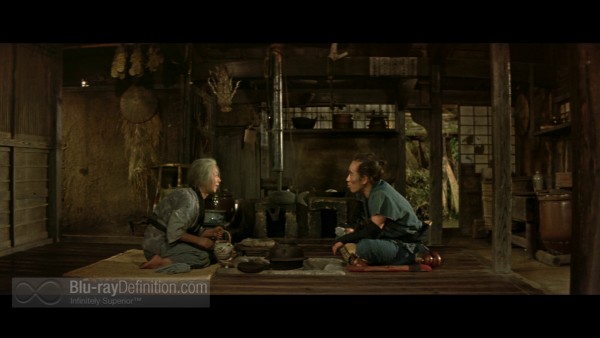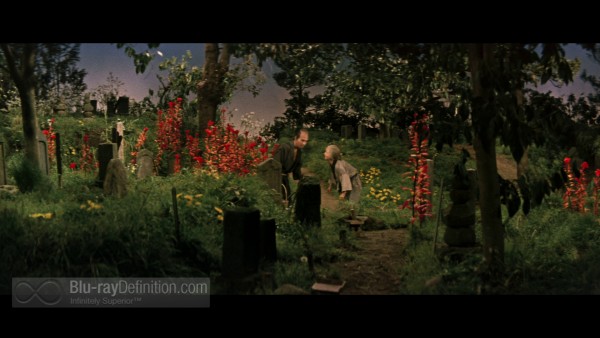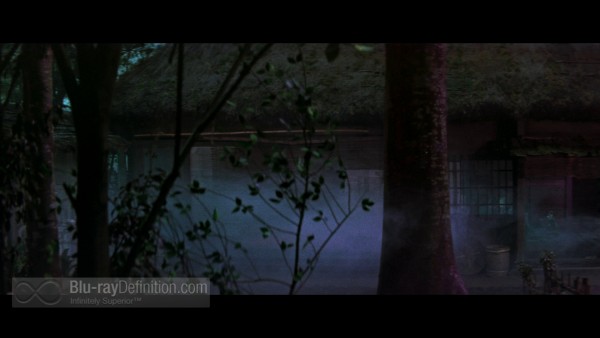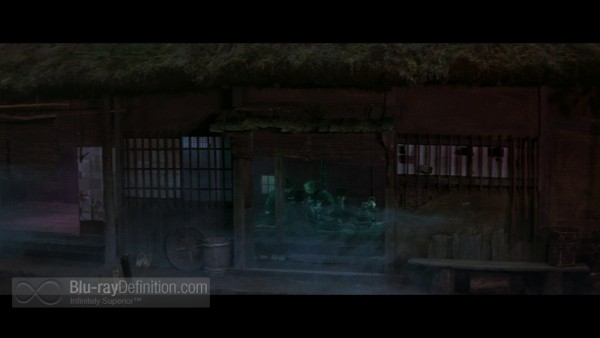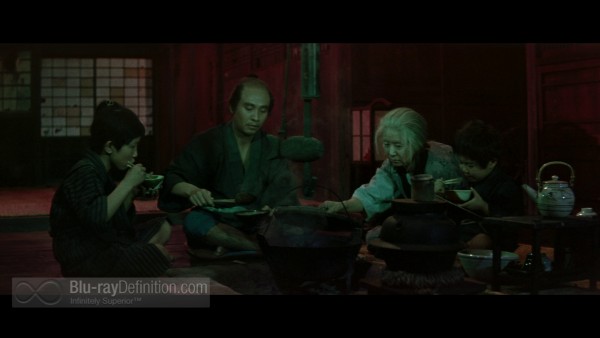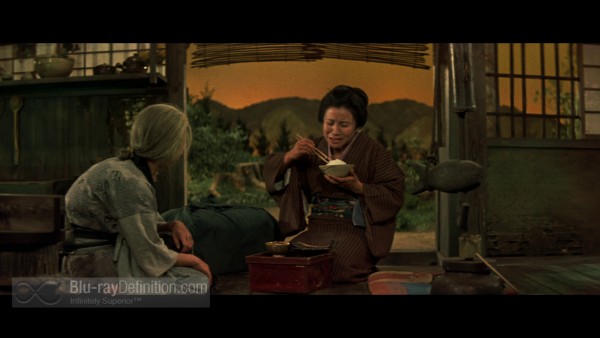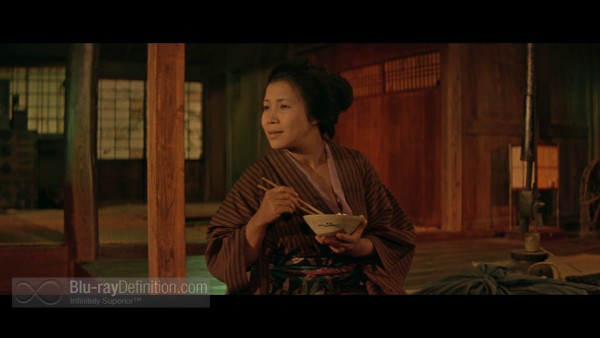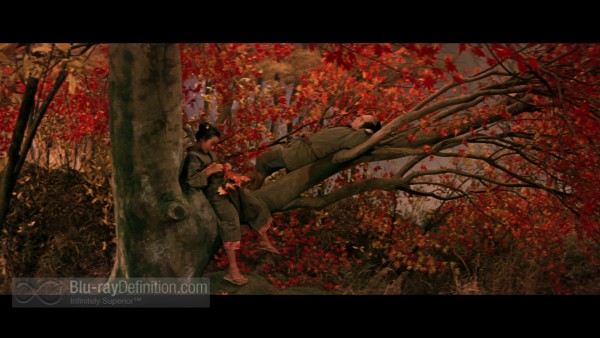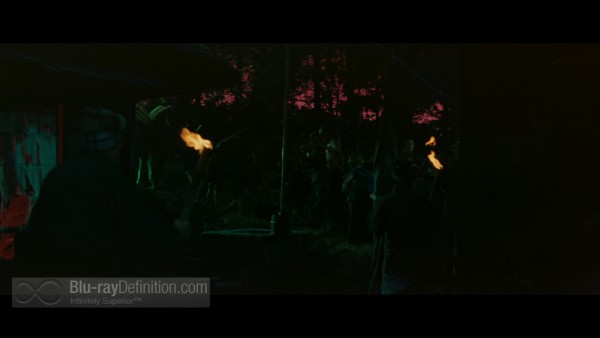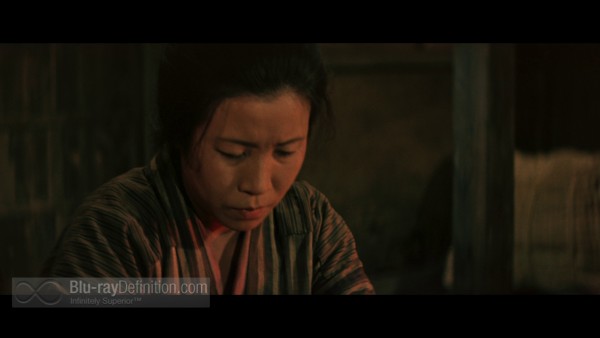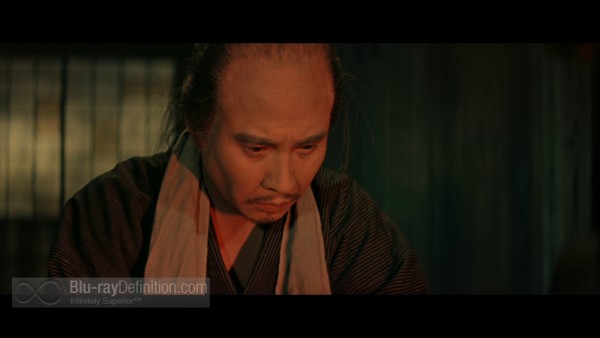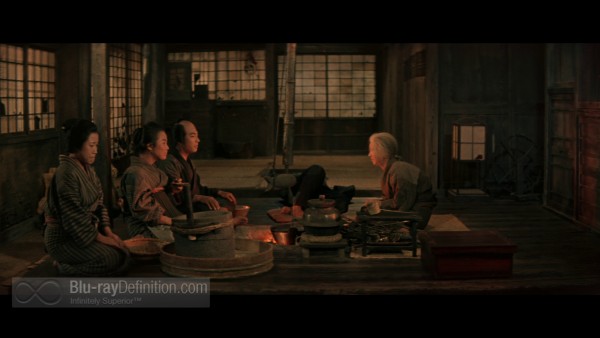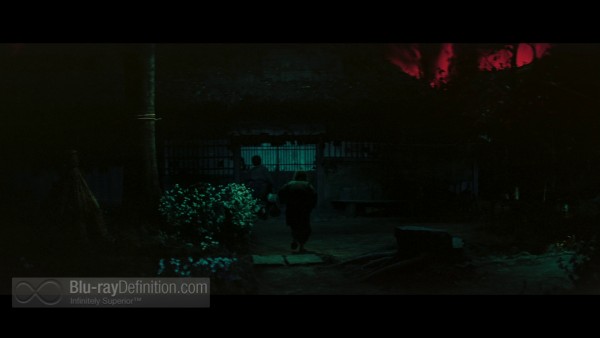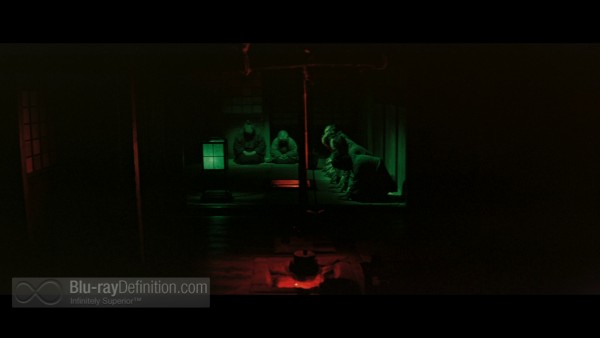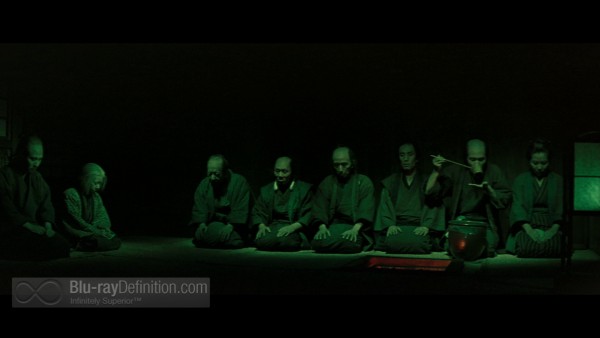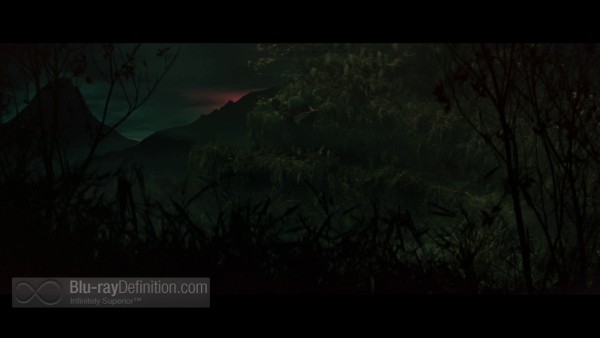- Aspect Ratio: 2.35:1
- Video Codec: AVC/MPEG-4
- Resolution: 1080p/24 (23.976Hz)
- Audio Codec: Japanese LPCM 1.0 (48kHz/24-bit)
- Subtitles: English
- Subtitles Color: White
- Region: A (Region-Locked)
- Rating: Not Rated
- Discs: 1 (1 x Blu-ray)
- Digital Copies: N/A
- Run Time: 98 Mins.
- Studio: Criterion Collection
- Blu-ray Release Date: February 5, 2013
- List Price: $29.95
–
Overall
[Rating:4/5]
The Film
[Rating:4/5]
Video Quality
[Rating:4.5/5]
Audio Quality
[Rating:4/5]
Supplemental Materials
[Rating:2/5]
Click thumbnails for high-resolution 1920X1080p screen captures
(All TheaterByte screen captures are lightly compressed with lossy JPEG at 100% quality setting and are meant as a general representation of the content. They do not fully reveal the capabilities of the Blu-ray format)
–
The Film
[Rating:4/5]
1958’s The Ballad of Narayama (楢山節考, Narayama Bushikō) from director Kinoshita Keisuke (later remade in 1983 by Imamura Shōhei) is a pensive meditation on life, death and growing old. Based on a novel by Fukazawa Shichirō, which in turn is based on a Japanese folk legend, the film is set in an undefined period, probably sometime around the late 19th century, in rural Japan. Inspired by kabuki and purposely removed from the “real world,” Narayama is visually placed in stage sets that do not seek to look like reality, but instead they are intentionally “fake” and beautifully designed. Bright red autumn leaves, painted backdrops, and colored lights brilliantly set the mood and tone and often the latter rise or fall to trigger the beginnings and endings of scenes. A joruri narrates in true kabuki tradition, often injecting poetic or philosophical reflection on the scene, lifting the grim tone to lofty heights.
The story concerns itself with ubasute (姥捨て), or “the abandonment of the old.” It follows an elderly woman, Orin (Tanaka Kinuyo), who has reached the age of 69 and is soon to be ready to make the journey to the the top of the mountain of Narayama where she will be left in the cold, abandoned to die, so she will no longer be a burden on the younger members of her family. In this small rural village where poverty is a reality and starvation is always a concern, this practice has become the accepted routine. Before she makes her journey, however, Orin must secure her son Tatsuhei (Takahashi Teiji) a wife, and she does. The widow Tama (Mochizuki Yuko) proves a worthy and loving companion for her son and a welcome addition to the family. But Orin still has concerns, mainly that her teeth all remain and she is eating too much food that her family could be eating, especially when her grandson’s pregnant and selfish bride joins them.
In contrast to the Imamura Shōhei remake, which was partly inspired by Kinoshita’s film and taken from the same source novel and folk material, dealt more in reality, and was often tempered by sensuality and dark humor, Kinoshita’s film is like a staged play straight through and grimmer in tone. It dazzles with color, yet it strikes one with the realities of human suffering in a quiet way. The thoughts on aging, which no one can escape, are profound and touching. Orin’s resoluteness in her desire to ascend the mountain and make the ultimate sacrifice is contrasted with the rest of the villagers who all seem rather self-centered and mean spirited, without a thought for their own inevitable futures. Even in the face of the elderly Mata (Miyaguchi Seiji), who has passed the age where he was meant to leave, but refused, and had now has been kicked out by his son and reduced to the status of a beggar, the others are blind to their destinies. Only Orin is kind to him, offering him food, even as she kindly tries to persuade him to join her on her journey to the mountaintop.
The film is quietly haunting, bleak, yet at times optimistic. Beautifully filmed and marvelously acted, its roots in traditional kabuki and the enigmatic ending all make it a melancholic, thoughtful, and visually breathtaking treat.
Video Quality
[Rating:4.5/5]
‘This new digital master was produced from the 2011 restoration done by Shochiku studios and Imagica. For the restoration, a scan was created in 4K resolution on an Imagica IMAGER scanner from the new 35mm interpositive wetgate printed from the original negative; the original negative could not be scanned directly due to excessive damage. The restoration work was then performed in 2K resolution.‘
The Ballad of Narayama comes to Blu-ray from the Criterion Collection in an awesome AVC/MPEG-4 1080p encodement that nearly belies any damage in its original source. While it can at times be seen that the restoration was not done directly from the original negative in a slight softness or lack of crispness and extension of detail into the backgrounds or during distance shots, the end result here is still something rather rich and film-like. It looks clean, textured, and wonderfully saturated. There is a brilliant level of color and contrast, beautifully extended and nuanced shadows, and a fine layer of grain. The film was shot in the “Shochiku GrandScope” 4-perf 35mm anamorphic format, and one can see some of the artifacts of this at times, but it does not detract from the viewing pleasure nor has it anything to do with the transfer itself.
Audio Quality
[Rating:4/5]
‘The original soundtrack was remastered at 24-bit from a sound positive. Clicks, thumps, hiss, and hum were manually removed using Pro Tools HD. Crackle was attenuated using AudioCube’s integrated workstation.‘ The monaural soundtrack comes provided in Japanese LPCM 1.0 (48kHz/24-bit). It offers rather clean sound given its age and a surprising amount of dynamics and fullness for its joruri narration.
Supplemental Materials
[Rating:2/5]
This particular Criterion Collection release is unusually light on the supplements, offering only a theatrical trailer (2.35:1; 1080p) and teaser (2.35:1; 1080p) for the film on disc, and one essay on the film by film critic Philip Kemp in the booklet, alongside the usual film credits, stills, and information on the restoration.
The Definitive Word
Overall:
[Rating:4/5]
The Ballad of Narayama is a moving allegory that can be interpreted in so many ways. As I write this, I find it difficult not to look at this film through the lenses of today and the debates we in our supposedly modernized and enlightened society continue to have over caring for the elderly, the poor, healthcare, social security and the like. Perhaps we are still sending people to the top of the proverbial mountain, like the enigmatic ending of Kinoshita’s film. Was he telling us that we would end up right where we started with his industrial train and station infiltrating his otherwise completely “fake” almost dream-like sets?
Additional Screen Captures
[amazon-product]B00A8QDHZG[/amazon-product]
Purchase The Ballad of Narayama [Criterion Collection] on Blu-ray at CD Universe
Shop for more Blu-ray titles at Amazon.com
–
[amazon-product]B00A8QDHZG[/amazon-product]
Purchase The Ballad of Narayama [Criterion Collection] on Blu-ray at CD Universe
Shop for more Blu-ray titles at Amazon.com
Overall
[Rating:4/5]
The Film
[Rating:4/5]
Video Quality
[Rating:4.5/5]
Audio Quality
[Rating:4/5]
Supplemental Materials
[Rating:2/5]
–

